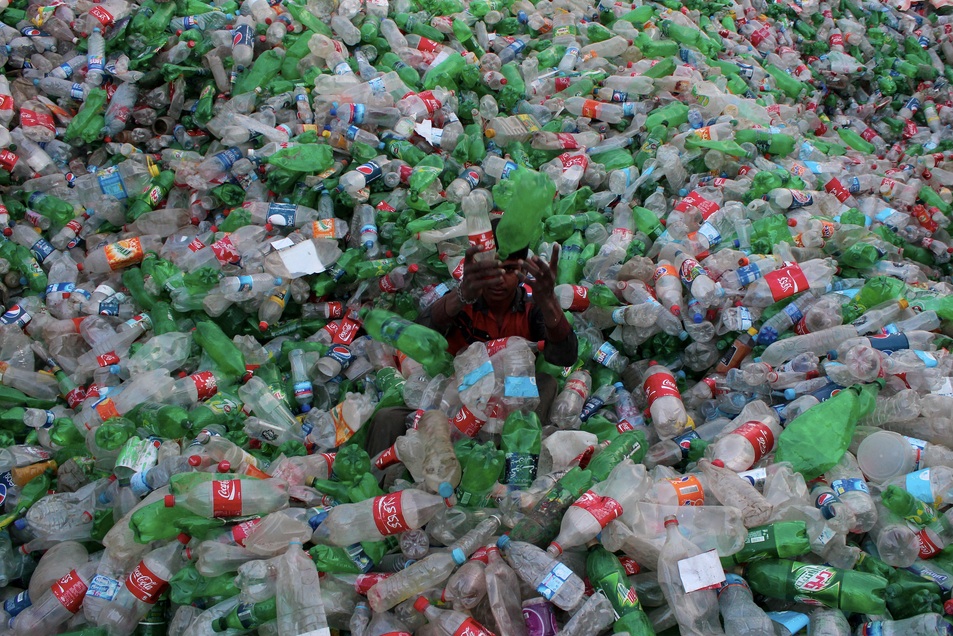The scene is a recycling plant. It could be anywhere in the world, but in this instance it happens to be in Lahore, Pakistan. The plastic bottles, either clear or lime green, are recognizable, not only by their labels—some because they are in English and clearly mark internationally recognizable brands, and many others because they simply reproduce a common form of branding—but also by the general uniformity of their size and shape. Not perfectly identical, they are nonetheless similar enough to mark a common commercial product. Almost to a number they were used to sell sugared drinks or bottled water, but in any case each was generally used one and only one time. That they are being recycled rather than burned or buried or simply left to deteriorate at their own glacial pace is a good thing, to be sure, but their sheer volume, accented by the tight framing of the photograph, suggests that something is remiss.
If you look closely you will see that there is an individual in the very middle of the image. He is barely recognizable. Nearly buried by the bottles that encompass his body, his face all but occluded by two bottles that he appears to be juggling, only his dark skin distinguishes him from the commercial colors that surround him. And therein likes the paradox of neoliberal globalization for all too see. Cast in the center of a sea of products reliant upon and marketed to his individual needs and desires, his individuality has been almost totally effaced, made unrecognizable by the commercialization and mass production of a product that for all intents and purposes lacks any nutritional value. And one can only imagine what will happen when he has been thoroughly absorbed by the waste. Here, it seems, we see one version of the future of the global individual.
Photo Credit: Rana Irfan Ali/Zuma Press

Discussion